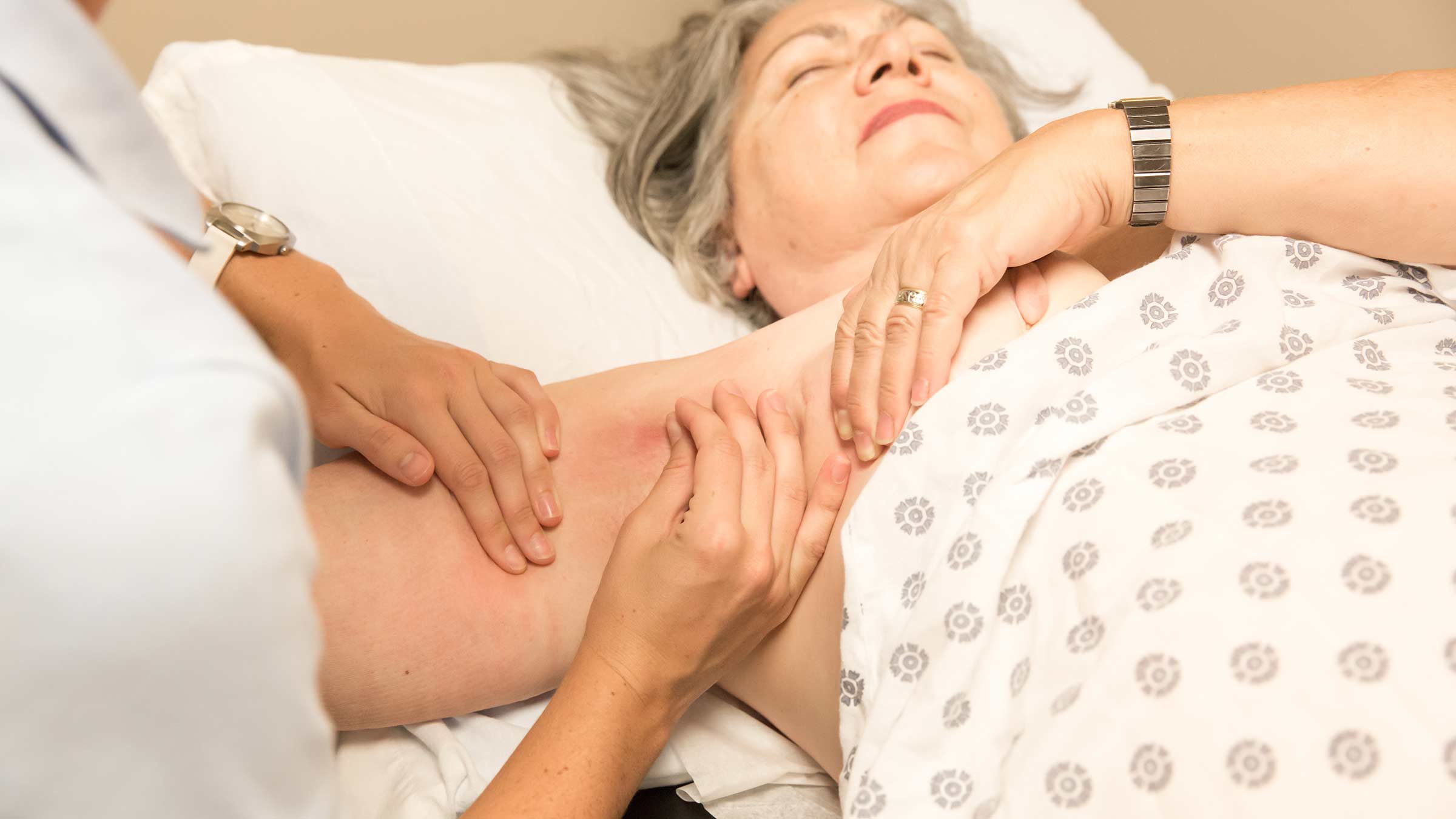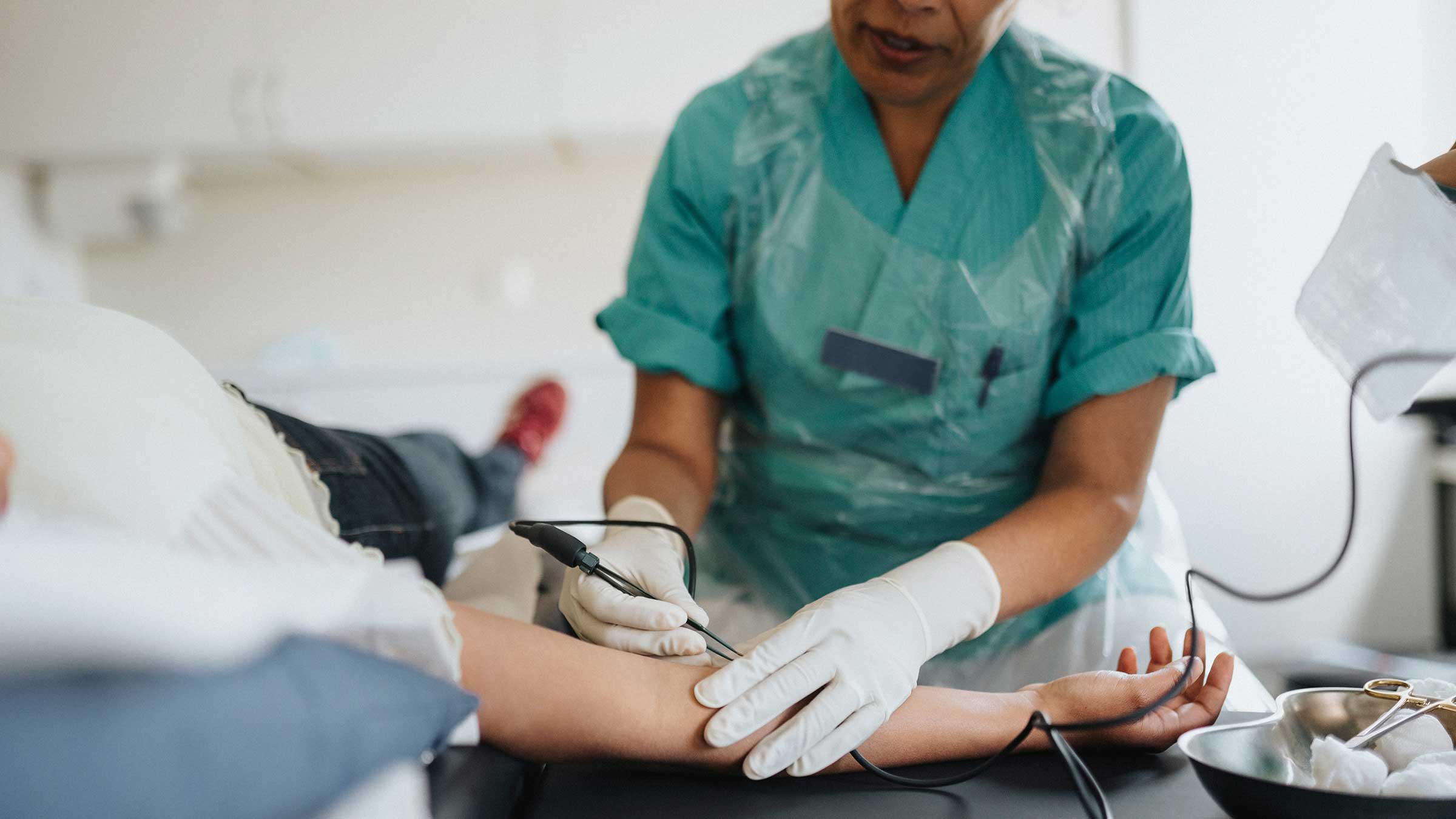What is lymphedema? Treatment, how to identify it and more
When the body’s lymphatic system isn’t properly draining fluid, swelling known as lymphedema occurs.
It’s a problem that often affects cancer patients, but the good news is that we’ve developed new ways to treat and prevent it, with more on the way.
Here are some of the common questions I hear about lymphedema and the progress we’re making to combat it at The Ohio State University Comprehensive Cancer Center – James Cancer Hospital and Solove Research Institute (OSUCCC – James).
What is lymphedema?
Lymphedema is an imbalance between the lymphatic fluid production, which occurs throughout the body, and its clearance. For the majority of patients that we see in the developed world, lymphedema usually develops because of a direct injury to the lymphatic system.
Most commonly, it’s part of cancer therapy. And that means the removal of lymph nodes, and/or chemotherapy. Often, treatment involves a combination of the two in addition to radiation therapy.
Why would you remove the lymph nodes?
Specific cancers tend to spread primarily to lymph nodes as the first stop beyond the primary tumor site. And so, if the lymphatic system is involved with the spread of the cancer, removal of at least some of the lymphatic system is very frequently part of the cancer therapy. The same goes for radiation, which is used to control individual tumor cells that may be migrating to or from the involved node(s). Radiation is very effective in destroying these cells, but it can also do some damage to the surrounding lymphatic system, affecting the body’s ability to clear out fluid.
What are some of the early symptoms?
Early symptoms of lymphedema would be heaviness or tightness in the affected body part. In the upper extremity, patients may notice that previously tight-fitting clothes or jewelry may be more difficult to put on, or that an indentation in the skin is present when removed.
Patients may also notice an indentation to their arm, for example, as they rest the arm on a chair. That would be what we call “pitting edema,” and it’s a slightly later sign for lymphedema. Much of what we do is to educate certain at-risk patients about these signs and symptoms, so they know what to look for as well as prevention strategies.
What’s the difference between post-surgical swelling and lymphedema?
Post-surgical swelling and lymphedema can present very similarly.
Post-surgical swelling tends to be just the body’s reaction to an injury anywhere. That usually settles within days to weeks of surgery — at least, the most acute or severe parts of the swelling will settle quickly.
Lymphedema, though, would stay and or worsen over time. The swelling that’s associated with the post-operative period tends to be in the area where the surgery happened, whereas lymphedema may be quite a distance from that, often in a dependent area — an area that is lower than the surgical site.
Can you prevent lymphedema or slow its progression?
The prevention of lymphedema is one of the most exciting areas in our field right now. We can identify several lymphatic channels at the time of lymph node removal, and we can actually connect them surgically to little blood vessels (venules). This allows fluid to drain into the blood stream, a pathway that exists naturally in some parts of the body.
This can decrease the incidence of lymphedema by up to tenfold. Preventing lymphedema before it happens is absolutely the best approach, because it preserves the normal lymphatic function, including the pumping mechanism that propels lymph fluid within the lymphatic channels.
How to treat lymphedema, and techniques developed at Ohio State
A technique that we’ve developed here at the OSUCCC – James for the treatment of lymphedema is a vascularized lymph node transplant.
Specifically, we’ve focused on the transplantation of abdominal lymph nodes. We can take lymph nodes from other parts of the body where there’s an excess.
We can transplant those with their blood supply into the area where the lymph nodes are missing or where lymph fluid is accumulating. The lymphatic channels actually grow toward those lymph nodes and re-establish a connection. Those lymph nodes will again work as a clearing station.
Is lymphedema painful? And if so, how can someone manage the pain?
Lymphedema can be painful, and it tends to be more uncomfortable the greater the swelling or volume excess. Therapy, such as manual lymphatic drainage (a specialized type of massage) and compression bandaging or garments, and early surgical intervention can help minimize or alleviate the discomfort.
Generally speaking, lymphedema tends to be more of a dull ache than sharp pain. Most patients manage it with minimal or no medication.
What are some key areas of research into lymphedema?
It’s a very exciting time in that many, many things have happened in the last 10 years. There’s so much more focus on diagnostic tools, surveillance and treatment methods.
For example, we’re looking now at designing garments with sensors embedded into them so that we have a better idea of what kind of compression we’re delivering at what part of the body and how effective it is.
I’m certain we’ll see many new therapies and develop a much greater understanding of lymphedema within the next five or 10 years.

The choice is clear
Our experts develop and deliver the most advanced targeted treatments leading to better outcomes and more hope.
Learn More








